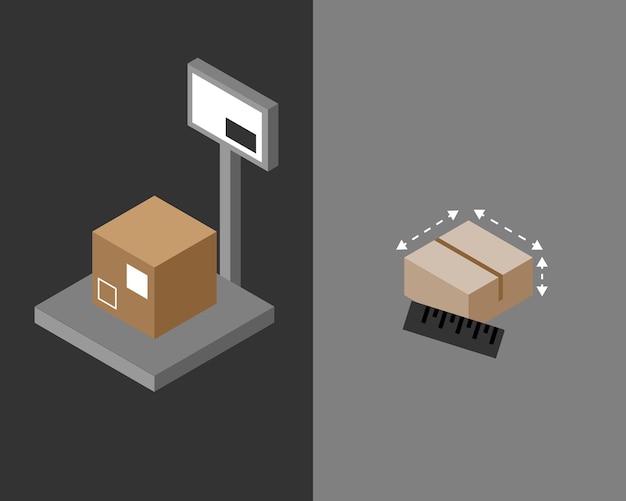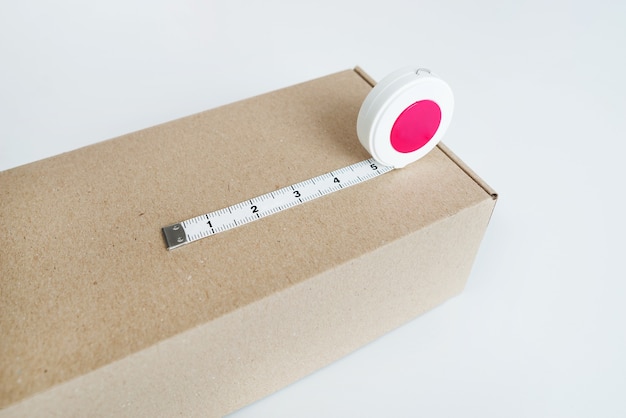In dropshpping industry, product weight is one of the most important factors that influence shipping costs. Usually heavier the product is, the more expensive the shipping fee will be, that’s why most people only dropshipping light products. However, do you know sometimes product size can also be a critical factor that makes shipping rates become higher than you expected? That’s because when shipping light products, most shipping companies will use the dimensional weight to calculate shipping costs.
So what is dimensional weight? How to know the exact shipping cost of the product you want to purchase by checking the dimensional weight? In this article, we will answer your questions about dimensional weight. Now let’s get started!

What is Dimensional Weight?
Brief Introduction of Dimensional Weight
Dimensional weight, which is also called “DIM” weight, is a concept used by freight and shipping companies. It is commonly used in shipping light goods or items that take up a lot of space. Every time you use a shipping company to dropship a product, you will be either charged based on actual weight or dimensional weight.
If you want to determine whether a package should be charged based on dimensional weight, you will need to use a formula provided by the shipping company to get the dimensional weight first. Then you should compare the dimensional weight with the actual weight. If the dimensional weight is higher actual weight, then the product is considered a large product and it should be charged based on dimensional weight.

Why Do People Use Dimensional Weight?
Most shipping companies use dimensional weight because companies need to ensure their profit while shipping large cargo. Since all kinds of shipping vehicles have limited space, shipping more large products means less space will be available in the vehicle. In this situation, if all the shipping companies still use the actual weight to calculate the shipping cost, they would surely lose profit while shipping large light products.
In the eCommerce industry, most dropshippers are often concerned about if their products will be charged based on DIM weight, because this means dropshippers need to pay more for shipping a cheap product.

How Do You Check Shipping Price With Dimensional Weight?
Usually, the shipping cost of a package is evaluated by the actual weight of the package. Such a method is efficient for dropshippers and shipping companies to know how much it may cost for shipping a package. However, this method is only applicable when the actual weight is greater than the dimensional weight.
Otherwise, when the calculation shows the dimensional weight is greater than the actual weight, then shipping companies will charge the shipping cost using the dimensional weight. Because shipping companies must ensure that they don’t lose money and using dimensional weight is a good solution.
So, sometimes even if the actual weight of a package weighs 1 kilogram, you may still need to pay the price for shipping 2 kilograms. Thus, to check the shipping price by using dimensional weight, first, you need to calculate the dimensional weight. Once you determine the dimensional weight, then you need to compare the dimensional weight with the actual weight.
If the dimensional weight is greater than the actual weight, then you can use the dimensional check the referral price list provided by the shipping company. If the actual weight is greater than the dimensional weight, then you should use the actual weight to check the referral price list to know how much the shipping cost is.

How Do You Calculate Dimensional Weight?
If you want to calculate the DIM weight of a package, firstly, you must first get the length, width, and height of the packages from the suppliers or your fulfillment partner. Products with large sizes usually have a high chance to be oversized in shipping and you should pay more attention to such kinds of products specifically.
Although different shipping channels have different measurements for dimensional weight, there are still some commonly used formulas for calculating DIM. Here we will take one of the most used formulas shared by various companies as an example.
In this example, you are about to send a package to your customer and you already got the size and actual weight information about the package. To get the dimensional weight of the package, you need to multiply the three dimensions of the package to get its cubic size. Then if the size of the package is measured in centimeters, you should divide the cubic size by 6000. If the package size is measured in inches, you should divide the cubic size by 166.
In this case, we will use centimeters to show how to calculate dimensional weight.
- Your package actually weighs 0.1 kg.
- Package dimensions are: 10cm (length) * 10cm (width) * 10cm (height)
- The cubic calculation = 1000 cubic centimeters (10cm * 10cm * 10cm)
- So, the dimensional weight = 1000/6000 =0.125kg
According to the calculation, we can see that the dimensional weight of 0.125kg is greater than the actual weight of 0.1 kg. So this package should be charged based on the dimensional weight.

Why Sometimes It’s Hard to Determine Dimensional Weight?
Lack of the Package Information
Sometimes, determining whether a product should use dimensional weight can be a headache for many dropshippers. This is not because the formula is difficult or the dropshippers made mistakes, instead, even if the dropshippers are super intelligent, sometimes it’s still hard to know the exact dimensional weight of a package.
After all, the nature of dropshipping business is merchants do not have to hold the inventory of products. And this nature sometimes leads to a problem of uncertainty.
For example, sometimes even if you know the basic size information of the product you want to sell, you may still not know how big the package would be. Because different shipping companies have different methods and standards for packaging, different staff members may also use large boxes to pack the products. So sometimes you can’t know how much the shipping cost will be until the package is ready to go.
Packages Sometimes Need Extra Protection
In addition, when shipping sensitive or fragile items, the courier companies also need to take some special measures to ensure the package does not break on the road.
For example, many companies use bubble wrap to protect the fragile parts of products. Sometimes they also need to add room for necessary air-fill in the package. Although these production methods can prevent the product from being broken during transportation, they will also lead to an increase in shipping costs eventually.







